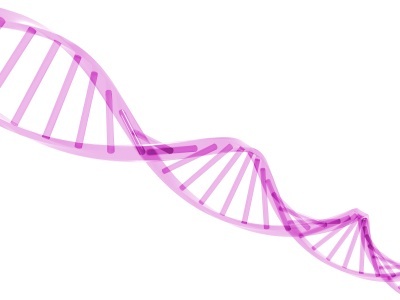Tricky tumors’ blood supply targeted
Lung cancer and the brain cancer glioblastoma multiforme are aggressive and notoriously difficult tumors to treat. If the tumors cannot be surgically removed, patients with these tumors typically survive only about one year after diagnosis. Both tumor types are resistant to radiation and are highly angiogenic (have rapidly growing blood vessels). Therefore, anti-angiogenesis therapies may help improve survival in these patients.
Eugenia Yazlovitskaya, Ph.D., and colleagues previously found that cytosolic phospholipase A2 (cPLA2) – an enzyme involved in the formation of lipid signaling molecules – promotes the proliferation of tumor blood vessels and contributes to cancer progression.
In the Sept. 22 Journal of the National Cancer Institute, they show that inhibiting cPLA2 (genetically and pharmacologically) in mouse models of brain and lung cancer attenuated the development of new blood vessels in these tumors and slowed or halted tumor progression due to down-regulation of the production of bioactive phospholipids. The results suggest that cPLA2 inhibition may be an effective strategy in treating patients with glioblastoma multiforme and lung cancer.
— Melissa Marino
Eyes offer view of memories
Individuals with schizophrenia often have memory impairments. Using direct measures – such as explicit recall and reaction times – to assess specific memory deficits can be problematic, because schizophrenia also affects other cognitive processes.

iStockphoto.com
Stephan Heckers, M.D., and colleagues studied eye-movement behavior as an indirect measure of relational memory – a memory that two things are “connected.” They trained 35 patients with schizophrenia and 35 healthy participants to associate a single face with a particular background scene. In the test phase, the subjects viewed three faces on the scene and had to recall which was the matching face. Control subjects quickly and consistently looked at the matching face, whereas patients with schizophrenia were slower and less likely to look at the matching face. Direct measures also revealed memory impairment in the participants with schizophrenia.
The findings in the Oct. 1 issue of Biological Psychiatry provide new evidence for relational memory impairment in schizophrenia and suggest that tracking eye movement is a promising approach for studying relational memory.
— Leigh MacMillan
Getting selenium levels just right
Nuts, cereals, meat, fish and eggs supply the body with selenium, an essential trace element required for the proper function of many enzymes and antioxidant responses. Too little selenium causes disease and too much selenium is toxic, but the amount needed for optimal health has not been established.

iStockphoto.com
Raymond Burk, M.D., and colleagues conducted a 40-week randomized trial of selenium supplementation in 98 healthy Chinese farmers who were selenium-deficient because of low dietary intake. The subjects received between 0 and 125 micrograms of supplemental selenium daily, and the investigators measured the blood levels of selenium and two selenoproteins: GPX and SEPP1.
The results, reported in the September issue of the American Journal of Clinical Nutrition, indicate that SEPP1 is the best blood biomarker for determining the optimum selenium intake. Based on the SEPP1 response to supplementation in the Chinese subjects, the researchers estimated that U.S. adults require 75 micrograms of selenium daily compared to the current recommendation of 55 micrograms daily.
— Leigh MacMillan
Maternal gene key to brain disorder
Although children with Angelman syndrome (AS) are often laughing and smiling, the disorder also causes severe intellectual disability, impaired speech, epilepsy, and movement and balance problems. AS is caused by loss of (or dysfunction in) UBE3A – a specific “housekeeping” protein that “tags” other proteins for degradation by the proteasome, a cellular “garbage disposal.”

iStockphoto.com
To determine the distribution of UBE3A protein, Kevin Haas, M.D., Ph.D., and colleagues compared the brains and peripheral tissues of AS mice (in which the maternal copy of UBE3A was deleted) to mice with normal UBE3A expression (WT).
In the September issue of Neurobiology of Disease, they report that AS mice have loss of UBE3A throughout the brain, indicating that neuronal UBE3A comes almost exclusively from the maternally inherited copy. Expression of UBE3A in heart and liver was reduced more than the predicted 50 percent in AS compared to WT mice. The comprehensive examination of the distribution of this key protein may help direct future studies on the pathogenesis and potential treatment of AS.
— Melissa Marino
We welcome suggestions for research to highlight in Aliquots. The items should be primary research articles (no reviews, editorials or commentaries) published within the last two months in a peer-reviewed journal. Please send the article citation (PDF if available) and any other feedback about the column to: aliquots@vanderbilt.edu.
Past Aliquots
June 22, 2012
June 8, 2012
May 11, 2012
April 27, 2012
April 13, 2012
March 30, 2012
March 16, 2012













